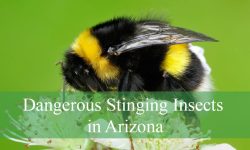Nevada’s desert landscapes are home to a surprising variety of ant species. While many ants are harmless, a few types can bite or sting when disturbed. From the painful stings of harvester ants to the defensive bites of carpenter ants, these insects play important ecological roles — yet they can also cause discomfort for humans and pets.
Understanding the biting ant species in Nevada helps you stay safe and take proper pest control measures. In this guide, we’ll explore seven common biting and stinging ants found across Nevada, complete with identification tips, habitat details, and behavior notes. Whether you live in Las Vegas, Reno, or rural desert areas, this comprehensive identification guide will help you recognize and handle these tiny but fierce insects.
Types of Biting Ants Found in Nevada
Harvester Ant (Pogonomyrmex spp.)
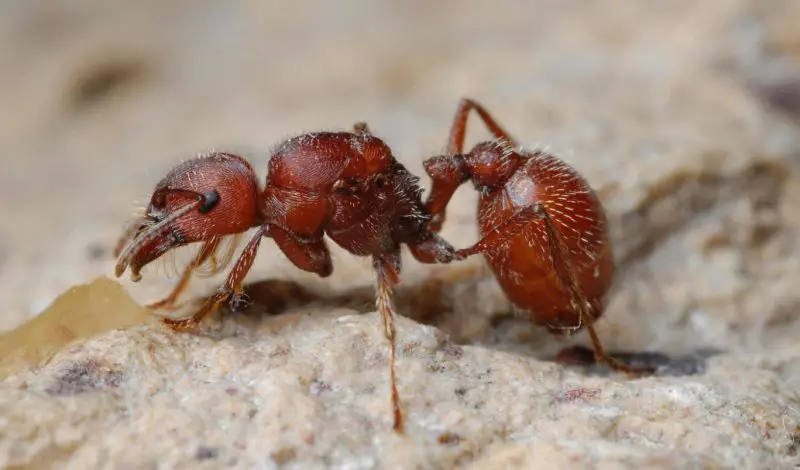
Harvester ants are among the most recognizable and painful stinging ants in Nevada. These reddish-brown ants are typically found in open, sandy areas throughout the desert. Their colonies often appear as large, circular mounds devoid of vegetation, since the workers clear the surrounding area to collect seeds.
Although harvester ants don’t actively attack humans, they will bite and sting when their nests are disturbed. Their sting delivers a potent venom that causes burning pain, redness, and swelling — sometimes lasting for several hours. In some cases, allergic reactions may occur.
Harvester ants are medium to large in size (up to 0.5 inches long) and are important to the ecosystem for dispersing seeds and aerating soil. However, avoid sitting or walking near bare soil patches, as these may mark their nesting sites.
Identification tips:
- Color: Reddish-brown to orange.
- Size: 0.3–0.5 inches.
- Nest: Bare circular patches with a central entrance hole.
- Behavior: Forage during hot daytime hours; aggressive when disturbed.
Red Imported Fire Ant (Solenopsis invicta)
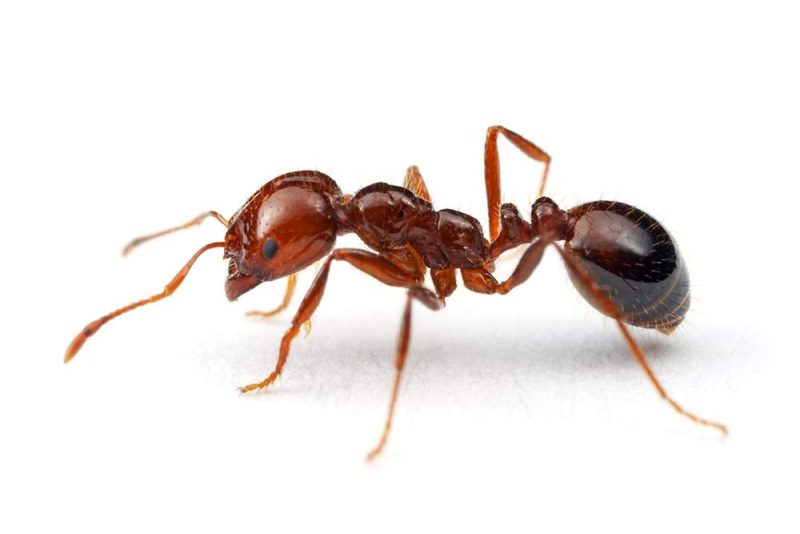
The red imported fire ant, though not as common as in southern states, has been occasionally reported in Las Vegas and southern Nevada. This invasive species is feared for its intense sting that causes a burning sensation, followed by pustules or welts on the skin.
Fire ants are small but aggressive, attacking in swarms when their mound is disturbed. Each ant can sting multiple times, injecting venom that can cause itching and swelling. For individuals with allergies, the reaction can be severe.
These ants build mounded nests in sunny, open areas such as lawns, sidewalks, or near foundations. Their colonies can contain thousands of workers and multiple queens, making them hard to eliminate without professional pest control.
Identification tips:
- Color: Reddish-brown to dark brown.
- Size: 0.08–0.25 inches.
- Nest: Mounds in soil, often near water or lawns.
- Behavior: Aggressive; sting in large numbers when threatened.
Carpenter Ant (Camponotus spp.)
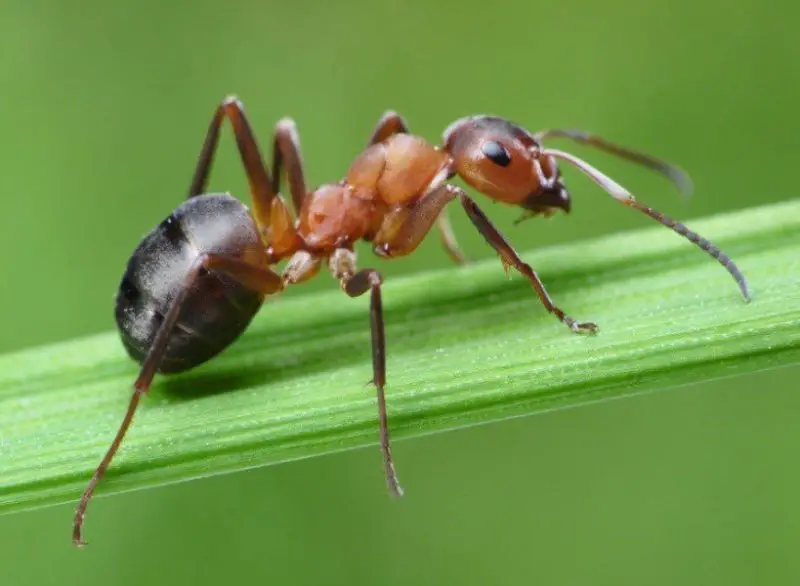
Carpenter ants are large, black or dark-brown ants that can be found both indoors and outdoors across Nevada. Unlike termites, they don’t eat wood, but they excavate it to build nesting galleries — potentially causing structural damage over time.
These ants do not sting, but they can deliver painful bites using their strong mandibles. After biting, they sometimes spray formic acid into the wound, intensifying the burning sensation. Carpenter ant bites can cause redness and minor swelling but are rarely serious.
Carpenter ants are typically nocturnal and prefer moist, decaying wood, so they often inhabit dead trees, firewood piles, or damp wooden beams in homes. Preventing water damage and sealing cracks helps deter infestations.
Identification tips:
- Color: Black, reddish-black, or brown.
- Size: 0.25–0.5 inches.
- Nest: Inside wood, tree trunks, or wall voids.
- Behavior: Bite defensively; often seen foraging at night.
Pavement Ant (Tetramorium caespitum)
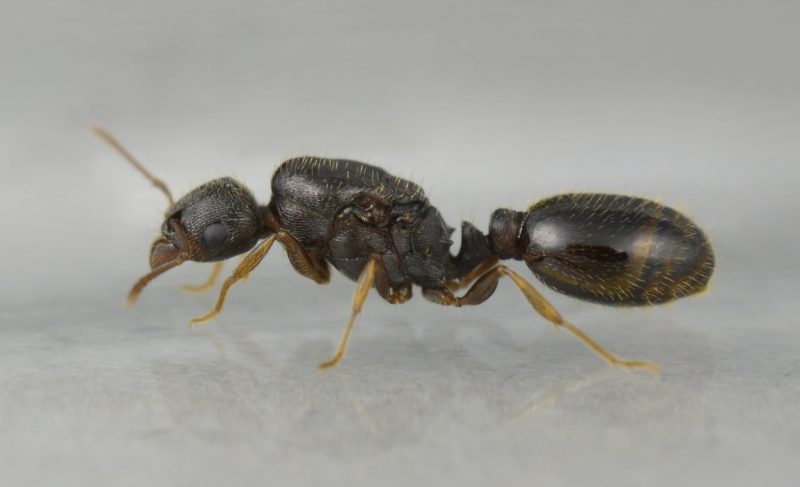
Pavement ants are small, brownish-black ants commonly seen crawling along sidewalks, driveways, and cracks in pavement — hence their name. They are one of the most widespread ant species in urban Nevada, especially in Las Vegas and Reno.
Though their bites are mild, pavement ants will defend their colonies when disturbed. Their mandibles can pinch skin, causing brief irritation. They don’t sting, but large infestations can become a nuisance inside homes as they forage for sweets and greasy foods.
Pavement ants are typically harmless to structures but can be hard to eliminate once established. Regular cleaning and sealing entry points are the best prevention methods.
Identification tips:
- Color: Dark brown to black.
- Size: 0.1–0.2 inches.
- Nest: Cracks in sidewalks or under stones.
- Behavior: Forage in long trails; bite mildly if disturbed.
Acrobat Ant (Crematogaster spp.)
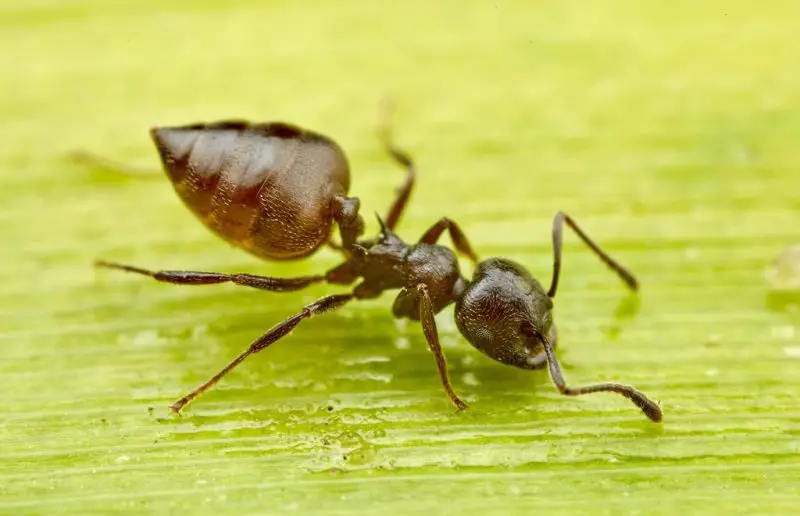
Acrobat ants get their name from their ability to raise their abdomen over their head when threatened — an acrobatic display used for defense. They are slender, light brown to black ants with a heart-shaped abdomen and a distinctive smell when crushed.
These ants can bite and sometimes sting, though their sting is weak compared to that of harvester or fire ants. Acrobat ants are most active in warm months and often build nests in decaying wood, tree cavities, or under stones.
In homes, they may enter through cracks or damaged wood, particularly if moisture is present. While not destructive, they can be a nuisance and cause mild skin irritation from bites.
Identification tips:
- Color: Light brown to black.
- Size: 0.1–0.2 inches.
- Nest: Decaying wood or tree hollows.
- Behavior: Raises abdomen when threatened; bites occasionally.
Big-Headed Ant (Pheidole spp.)
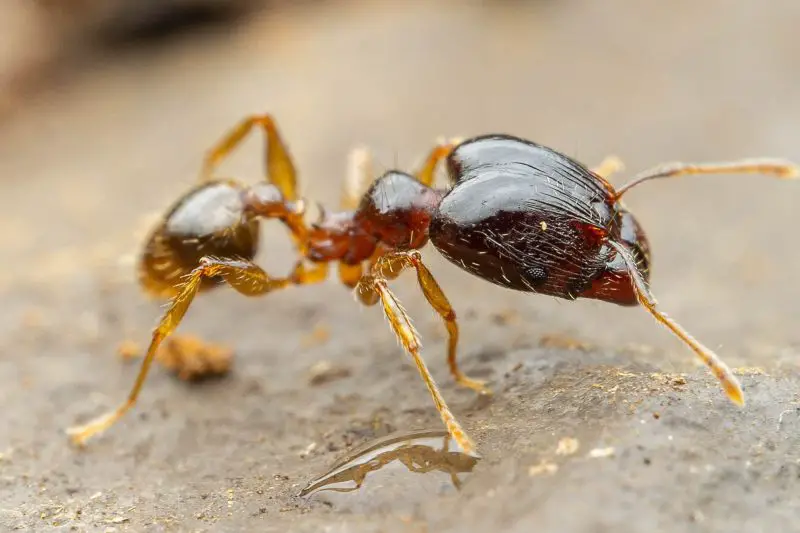
Big-headed ants are named for the enlarged heads of their soldier ants, which they use to defend the colony. They are small, yellowish to reddish-brown ants found in southern Nevada deserts and occasionally around homes.
While not particularly aggressive, these ants may bite when handled or disturbed. Their bite is not venomous but can feel like a small pinch. Colonies are often found under rocks, in soil, or along sidewalks.
Big-headed ants can become pests indoors as they search for food crumbs. They prefer warm, dry environments, and infestations often start outdoors before moving inside.
Identification tips:
- Color: Yellow to reddish-brown.
- Size: 0.05–0.1 inches.
- Nest: Under rocks or soil; near building foundations.
- Behavior: May bite defensively; soldiers have large heads.
Odorous House Ant (Tapinoma sessile)
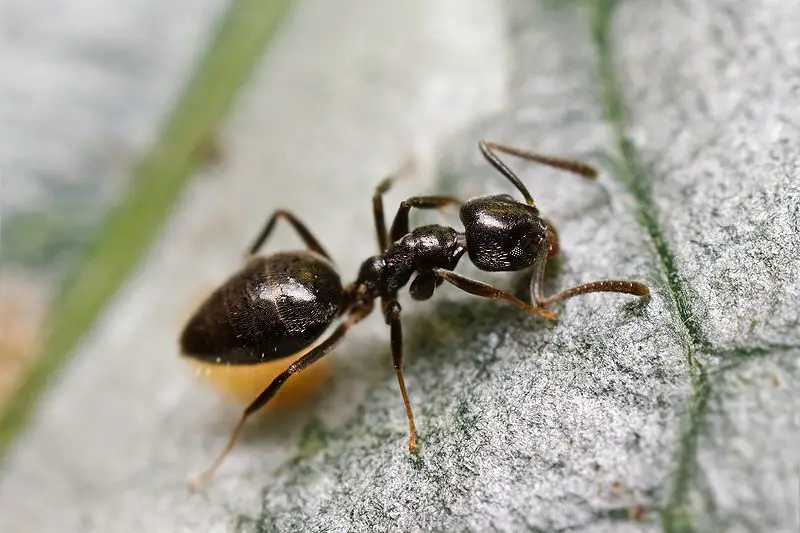
Odorous house ants are one of the most common household ants in Nevada. They’re small, dark brown insects that release a rotten coconut-like smell when crushed — a key identification clue. While they don’t sting, they can bite when disturbed, though the bite is not painful.
These ants prefer sugary foods and are often found in kitchens, bathrooms, or near water sources. Outdoors, they nest under stones, mulch, or logs. They’re also known for forming large colonies with multiple queens, making control difficult.
Although their bites are harmless, odorous house ants can contaminate food and become a significant nuisance in homes and businesses.
Identification tips:
- Color: Brown to black.
- Size: 0.08–0.12 inches.
- Nest: Indoors (walls, baseboards) or outdoors (under debris).
- Behavior: Emit a foul odor when crushed; bite lightly.
How to Identify Biting Ants in Nevada
Identifying ant species involves observing size, color, nesting location, and behavior. Here are key features to help you distinguish biting ants:
- Color: Fire ants and harvester ants are reddish, while carpenter ants are darker.
- Nesting sites: Pavement ants prefer cracks; harvester ants create bare soil mounds; carpenter ants live in wood.
- Aggressiveness: Fire and harvester ants are the most defensive; others bite mildly when provoked.
- Odor: Odorous house ants release a distinct smell when crushed.
If you notice large numbers of ants indoors or experience frequent bites outdoors, it’s best to identify the species before applying any treatment.
Where Biting Ants Are Found in Nevada
Ants can be found throughout Nevada’s diverse habitats, including deserts, mountains, and urban environments.
- Southern Nevada (Las Vegas, Henderson): Home to fire ants, pavement ants, and big-headed ants.
- Northern Nevada (Reno, Elko): More common to find carpenter ants and harvester ants.
- Great Basin regions: Host to many native harvester and Pheidole species.
Ants thrive in dry, sandy soils, but some species also adapt well to irrigated lawns or indoor environments.
What to Do If You’re Bitten by an Ant
Most ant bites cause mild irritation, but harvester and fire ant stings can be painful and, in rare cases, trigger allergic reactions. Follow these steps for treatment:
- Clean the area with soap and water.
- Apply ice or a cold compress to reduce swelling.
- Use topical hydrocortisone or an antihistamine to ease itching.
- Avoid scratching to prevent infection.
- Seek medical help if swelling spreads or if you experience dizziness, nausea, or difficulty breathing.
How to Prevent Biting Ants Around Your Home
Keeping ants away requires consistent prevention habits:
- Seal cracks and entry points in walls and foundations.
- Store food in airtight containers.
- Eliminate standing water and leaky pipes.
- Keep outdoor trash bins sealed tightly.
- Trim trees and shrubs away from structures.
- Use ant baits or professional pest control for large infestations.
Regular maintenance and cleanliness are your best defenses against biting ants in Nevada.
FAQs About Biting Ants in Nevada
Are fire ants common in Nevada?
Fire ants are not native to Nevada, but isolated populations have been reported near Las Vegas. Pest control services monitor these occurrences to prevent spread.
Which ant in Nevada has the most painful sting?
The harvester ant delivers the most painful sting in Nevada, with venom that can cause intense burning and localized swelling.
Can carpenter ants damage my home?
Yes. Carpenter ants don’t eat wood, but they excavate it to build nests, which can weaken wooden structures over time.
Do all ants bite?
No. Many ants don’t bite or sting. However, species like harvester ants, fire ants, and carpenter ants are known for their defensive behaviors.
When are biting ants most active in Nevada?
Ants are most active during spring and summer, particularly in warm and dry conditions when foraging and nesting activity peak.
Conclusion
Nevada’s arid environment supports a wide range of ant species — from the painful harvester ant to the resourceful carpenter ant. Understanding which ants bite or sting helps you stay alert and manage infestations effectively.
While most ant bites are harmless, it’s important to take precautions, especially in outdoor areas. Knowing how to identify ant species, treat bites, and prevent infestations ensures that you can enjoy Nevada’s outdoors without unwanted encounters.
Whether you’re hiking in the desert or maintaining your yard in Las Vegas, awareness of these seven biting ant types will help keep you safe and sting-free.




